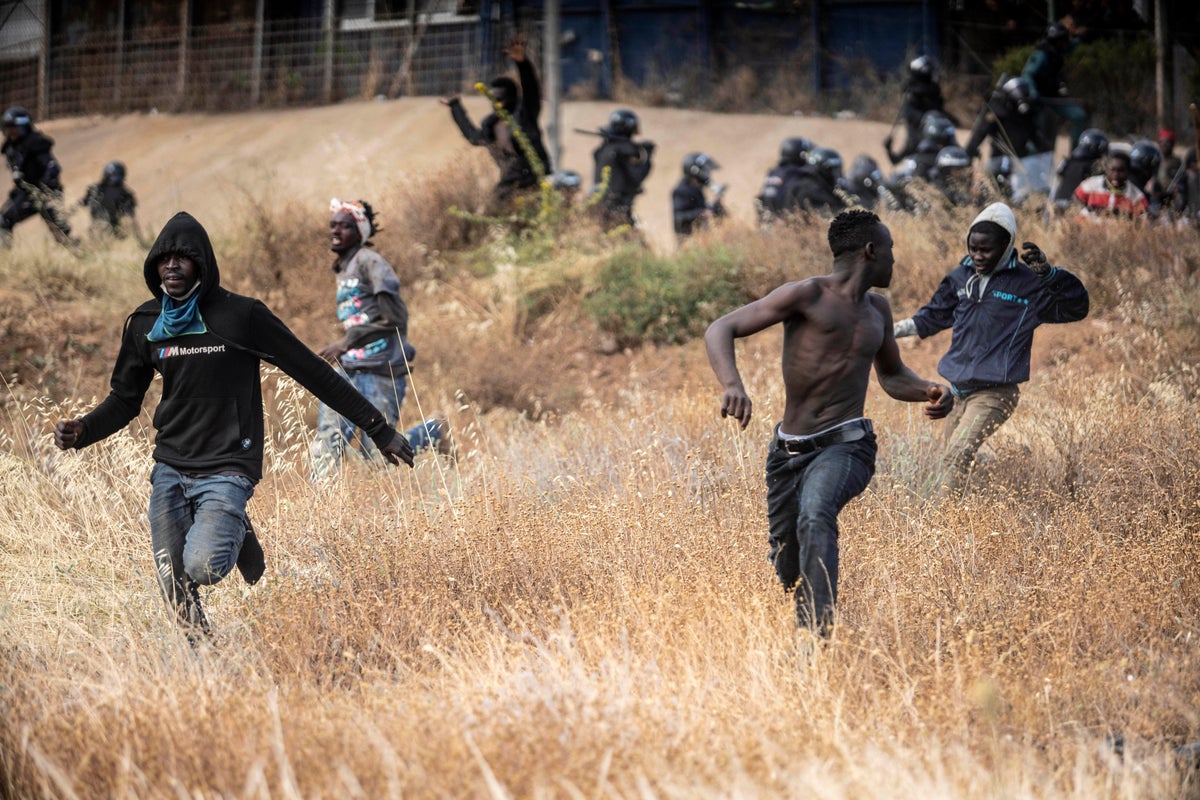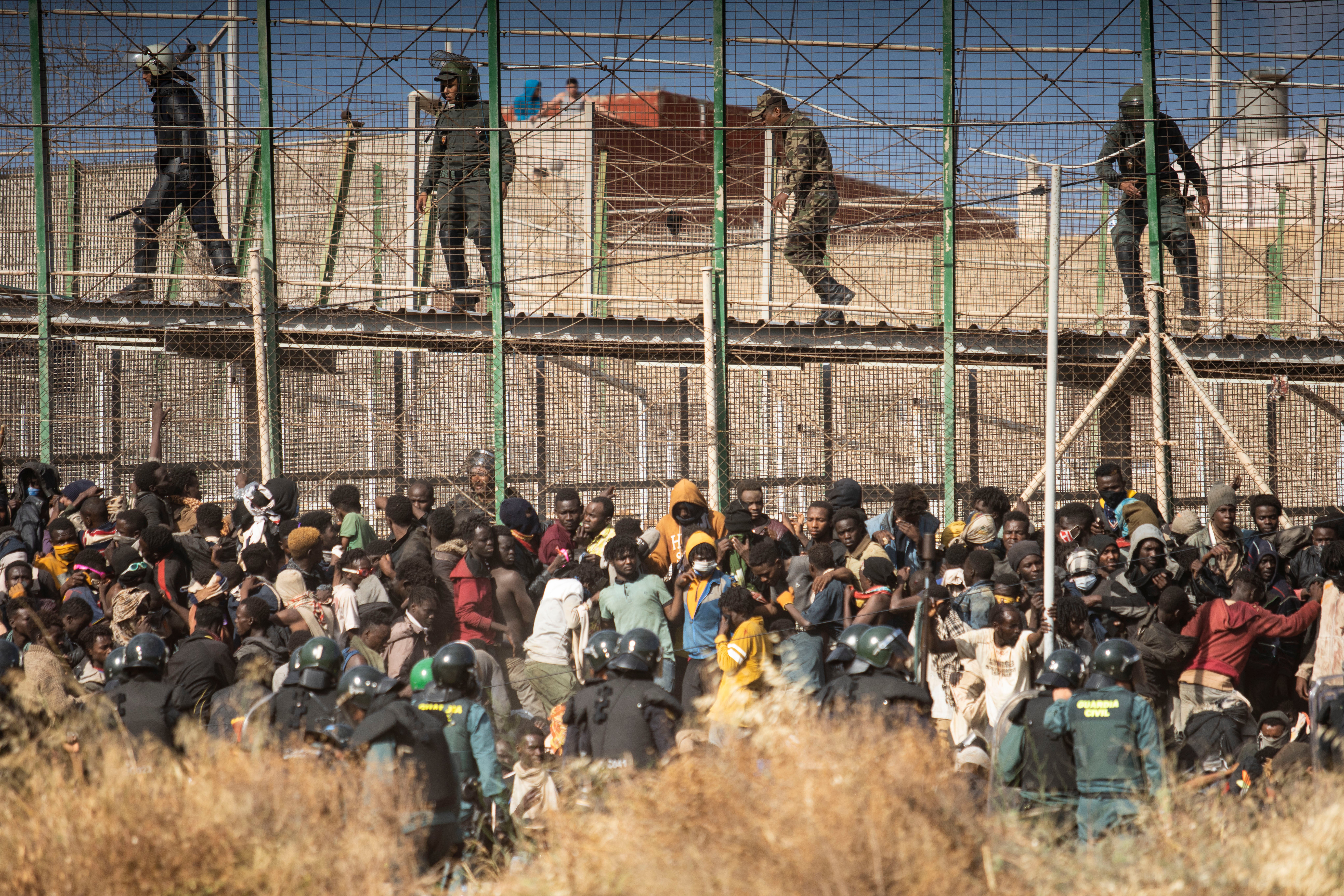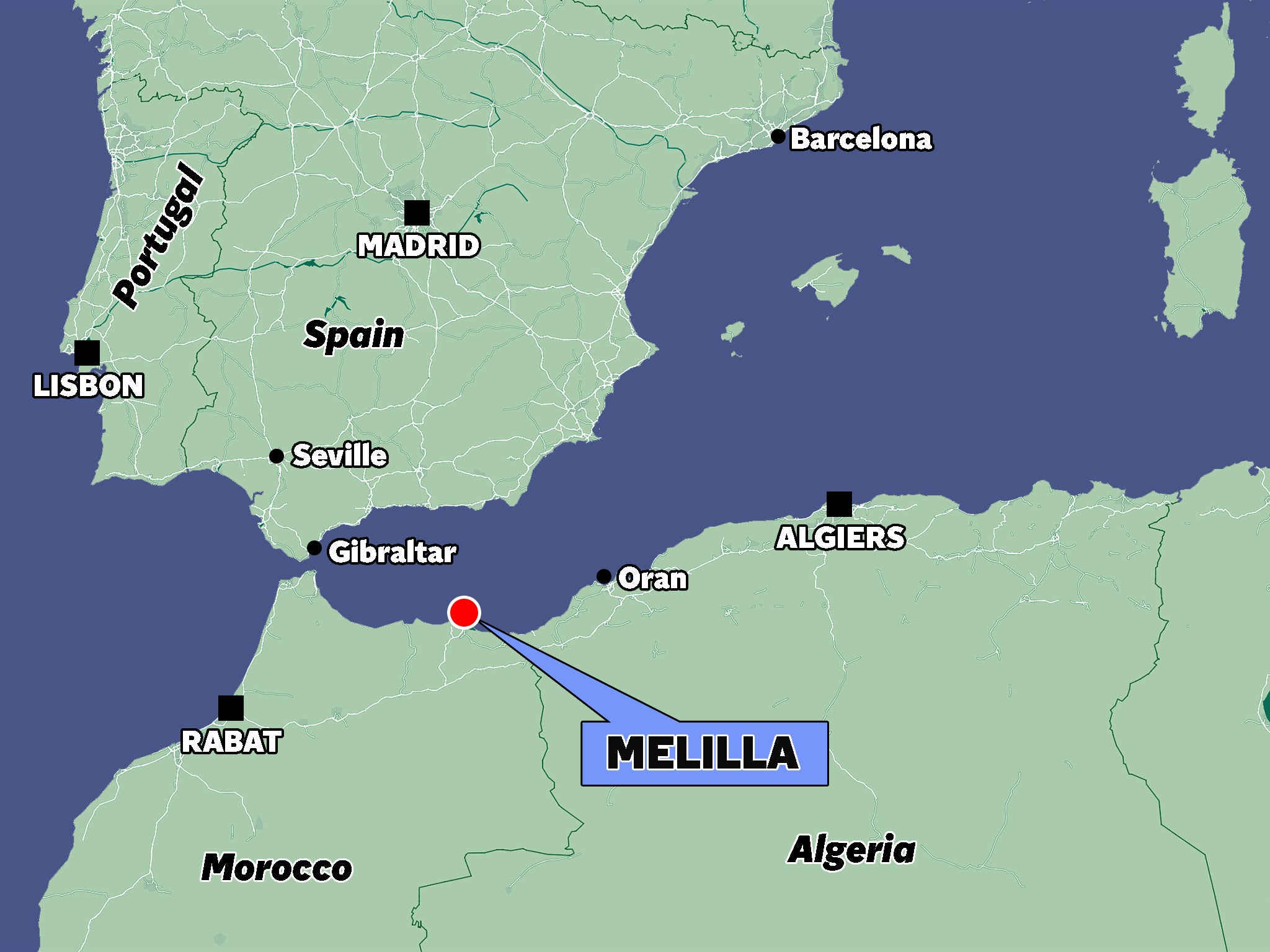
In the early hours of 24 June, Ali* felt nervous. He, along with hundreds of other people, had begun walking towards the border fence that divides Morocco and Melilla, an outpost of Spain in Northern Africa. Most of those walking with Ali were, like him, refugees from Sudan.
This was not Ali’s first attempt to enter Europe. He had previously spent four months detained in Libya after leaving his home in Darfur and trying to reach Italy via the Mediterranean Sea. This time, he hoped he could enter and apply for asylum in Spanish territory.
“We decided to go early in the day... because if something bad happened all the world would see,” he recalls.
But the events that took place in the hours that followed wound up being the deadliest attempt to cross a land border into Europe in recent memory. At least 23 people died, while 77 remain unaccounted for. Extreme police brutality and excessive use of tear gas are thought to have contributed to deaths and injuries, as no medical assistance was provided in the hours immediately following the incident.
Spain has distanced itself from the deaths. Last month, Spanish interior minister, Fernando Grande-Marlaska, insisted that none of the fatalities took place inside Spanish territory.
However, unpublished footage seen by investigative newsroom Lighthouse Reports – and partners El Pais, Der Spiegel, Enass and Le Monde – show how, within minutes of reaching a door inside the border post of Barrio Chino, many of those who attempted to enter were caught in a deadly crush that took place partly inside Spanish territory.
A high-ranking Spanish police officer, who wished to remain anonymous, told this investigation that it “was probable that people died in Spain”. This is the first time any police official in Spain has made an admission of this kind.

Lighthouse Reports has constructed the most advanced visual investigation of the events at the border post to date, matching dozens of testimonies to video analysis and interviewing several high-ranking Spanish police officials and dozens of survivors.
The investigation reveals how both Spanish and Moroccan forces coordinated 470 pushbacks from Spain into Morocco-controlled territory where dozens of asylum seekers later died. The hours of recording reveal that Spanish forces were aware of the violence unfolding at their border and yet pushed people back into danger.
A deadly crush
Every year, dozens of predominantly African asylum seekers make a perilous journey to Nador, a northeastern city in Morocco, to try to enter Spanish territory by jumping the border fence that divides the two territories.
On 24 June, Abdul*, 22, reached the border post door that separates Spanish and Moroccan territory and was crushed along with dozens of other people. He explains that the Moroccan authorities trapped the group by positioning themselves behind them and preventing them from getting out.
Videos analysed for this investigation show how Moroccan police fired at least 20 canisters of tear gas towards the group in this enclosed space in under eight minutes. Moments before, footage from the day seen by Lighthouse Reports reveals that Spanish officers were also spraying tear gas into the area. Excessive use of tear gas is forbidden under international law when used in a closed-off area – due to the risk of causing panic.
When the door was forced open, Moroccan authorities moved towards the group of people at the same time, and a deadly crush ensued.

“When we fell down ... we couldn’t rise up again, the government forces came on top of us, and were beating people using different things. Many people were hurt in this place. From there, I couldn’t move on,” says Abdul.
In a video that later surfaced of the day, Abdul is seen beneath a group of people, and can be heard saying: “My leg is broken, I swear to god”. Abdul says he thinks there were dead bodies on top of him.
‘I was thrown onto dead bodies’
Almost 500 people were able to scale the fence of the Barrio Chino border post and reach its exterior in Melilla.
Photos and videos taken by journalists on the day show Spanish officers facing a group of people standing behind a guard rail. Moroccan officers are seen in Melilla too, striking people with batons.
Sam*, who says he was 16 at the time, remembers vividly how his eyes burnt from the tear gas that he says was sprayed by Spanish Guardia Civil.
Both police forces were shouting, he says, while those who tried to move were shot with rubber bullets. Sam tried to think about his siblings in Sudan. His mother had passed away while he was in Libya, where he was briefly detained after attempting to reach Europe by sea. In Libya, he had registered as a refugee, but nothing had changed since.
He still had hope that he would be able to access protection in Spain.
But within a few minutes, he says his hands were tied together by Spanish officers and he was handed over to Moroccan authorities. What happened next still haunts him.
“Many of us were dragged on the ground from Spanish territory to the Moroccan side,” he recalls.
“When I was brought back, I found many dead people on the ground, I was thrown onto two dead bodies. They dragged me and threw me on these bodies after they harshly beat me.”

Moroccan and Spanish authorities collaborated in carrying out 470 pushbacks – summary deportations where people are denied the right to apply to asylum. At least 65 rubber bullets were shot by Spanish officers in Spain, according to sources in the Guardia Civil, the country’s national police force.
No assistance as people died
Among the video footage of the incident that would later surface and circulate online, a harrowing clip shows a Moroccan officer taking the pulse of a man, later identified as Abdul Aziz Yacoub, known by friends and family as Anwar. In the video, the officers conclude he is dead.
Anwar’s body is seen inside Spanish controlled territory.
Ibrahim*, 27, a Sudanese man who can be seen in footage of the day, was a friend of Anwar’s and says he witnessed him die. “Anwar was just killed before my eyes, he was killed near me,” he says over the phone in Rabat, just days after authorities raided the house he was staying in as part of ongoing tactics to intimidate migrants in the city.
Ibrahim says he saw Moroccan authorities beating his friend after he had already been left weakened by the tear gas.
Back in Sudan, Anwar’s niece says she found out about her uncle’s death on Facebook, when the Moroccan Association of Human Rights (AMDH) posted his photograph online. The family have since held a funeral for him but are yet to receive Anwar’s body.
“We want justice and want the perpetrators to be held accountable - we want people to get buried soon," she pleads.
The Moroccan government says 23 people died on 24 June, but survivors think the true number is likely higher, with 77 still unaccounted for.
Despite the hundreds of injured people on the day, medical assistance was not mobilised in time to help them – either in Morocco or Spain.
In Melilla, one ambulance was parked 100m from the border, but officials says they couldn’t get closer for safety reasons. In Morocco, ambulances were present throughout the day, but they were reportedly used predominantly to evacuate bodies.
Instead, back in Morocco, after hundreds of people were returned from Spain, people were forced to lie down under the sun for at least three hours. Videos show Moroccan officers continued to beat people there.

Ismail*, 19, is one of the young men who, like Sam, was forcibly brought back from outside the border post in Melilla. A video in which he is seen lying seemingly unconscious inside the Spanish side of the border post was circulated widely following the incident.
“Just before that [video was taken], I think it was just chaos, and I remember being beaten by the police,” he says.“They were beating [people] and shouting. I kept hearing [...] people asking for help while the police were beating and assaulting them.”
In the hours that followed, at least eight buses were mobilised in Morocco. They took hundreds of refugees to remote towns, where they were dropped off in the early hours of the following day, without access to medical care. Ismail was placed in one of the buses and taken to a remote city in Morocco, where he spent the following months homeless.
‘They do not care’
Sitting in Melilla across the road from a temporary accommodation centre in September, Ali scribbled his memories of the day on a loose piece of paper. He is one of the 133 people who escaped the police cordon and stayed in Melilla. As he recounted what happened, he drew a sketch of the Barrio Chino border post. The day is etched in his memory, but he now hopes to move on.
A month later, he took what he says was a “very scary” journey from Calais to the UK by boat. He spent 20 days in Manston processing centre, in Dover, before being placed in a hotel in Nottingham. “I am so happy that I made it here. I hope I can get a good lawyer and a fresh start,” he says.
Thousands of kilometres away in Casablanca, Sam, who just turned 17, can’t stop thinking about what happened on 24 June. “I can’t rest until there is justice,” he says.
Sam has been among the thousands of migrants who face discrimination as they struggle to access a job or find housing in Morocco. Authorities have since continued to arrest dozens of people involved in the attempted crossing and intimidating anyone who dares speak out.
Six months later, families are still searching for loved ones.
“This case really hurts me when I think about it,” Sam says. “Everyone is standing around, and there are bodies still in the morgue, and they have not been revealed to this day. The Moroccan government has become cruel to us.
“On the 24 June, that bloody Friday, we were in dire need of the European Union, but it did not care about us because we are just Africans”.
*Names have been changed for safety reasons
View the full-length video about the investigation here
The Moroccan government did not respond to the questions sent by this investigation by the time of publication. The Spanish Ministry of Interior says that “one of the tragic events of 24 June occurred on Spanish territory” and that “in view of the extremely violent behaviour of the migrants (...) the Spanish agents acted in an absolutely proportionate manner”. The Ministry of Interior added that claiming that Spanish agents “beat” the migrants is “a flagrant misrepresentation of the truth” and that the Guardia Civil had helped all migrants in need within their reach and had not hindered the work of the rescue forces. The ministry says the refoulement of migrants at the border was done in accordance with Spanish law.
Additional reporting by: Bashar Deeb, Jack Sapoch, Arthur Weil-Rabaud, Aziz Alnour, Alison Killing, Javier Bauluz, José Bautista, Javier Bernardo, Maud Jullien, Salaheddine Lemaizi, Steffen Lüdke, María Martín, Klaas van Dijken







